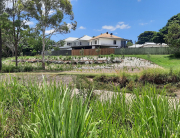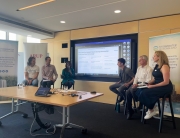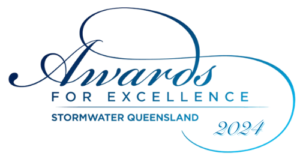Level 8
540 Wickham Street, Fortitude Valley
QLD 4006
For those who couldn’t make it to Cairns for the SQ conference late last year, we’re featuring some of the highly-rated presentations, including further updates and developments. Part one is on 19 February and will feature two presentations, followed by Part two on 19 March (mark that date in your calendar) with a further two highly-rated presentations (registrations will open in a week or so for part two).
Speakers and Topics
Ocean Plastic – the pressures and solutions that (almost) no one is talking about
Brad Dalrymple, Principal Environmental Engineer; and Jeremy Brown, Co-Founder, Ocean Protect
A recent survey of 1,000 Australians nationwide demonstrated that the highest concern of all Australians with regards to population growth is marine and waterway health – ahead of housing density and traffic. The survey also found that almost six in ten (57 per cent) of Australians are not satisfied with the health and cleanliness of their waterways such as creeks, rivers, ocean. The amount of plastic in our oceans and waterways is a key and growing public concern, and it is predicted that there will be more plastic in the oceans than fish by 2050.
Ocean plastic has devastating consequences to marine life. Many marine organisms cannot distinguish common plastic items from food. Animals who eat plastic often starve because they cannot digest the plastic and it fills their stomachs, preventing them from eating real food. For example, approximately 80 percent of seabird species have plastic in their stomach, A recent study of juvenile sea turtles from around the planet also found plastic in the bellies and digestive systems in all of the 100 turtles studied.
The survey, however, also identified that Australians do not know what the largest source of this plastic pollution, with ‘stormwater runoff’ (the source of approximately 80% of marine plastic) thought to be a minor source. Within Australia, stormwater is also the primary cause of degradation in our urban waterways.
The impact of stormwater runoff within Australia is due to a combination of factors: (i) high pollution generation rates in urban areas; (ii) the vast majority of urban areas have no stormwater treatment systems; (iii) where stormwater treatment systems are integrated, these assets receive minimal (and often zero) maintenance (e.g. to remove accumulated material).
To mitigate the impact of stormwater runoff within Australian waterways (and the ocean), study authors propose a range of actions, including:
- Increased community awareness and education in relation to the primary source of ocean plastic (i.e. stormwater)
- Transition away from single use plastics, supported by appropriate education.
- Enforcement of Government legislation requiring appropriate evaluation, monitoring and maintenance of stormwater control measures (and associated reporting)
- “Zero trash to ocean” targets established across Australia, requiring (as a minimum) full capture devices for all urban areas to capture all particles less than or equal to 5mm in diameter during a typical storm.
- appropriate funding to facilitate the aforementioned recommended actions via an appropriate ‘ocean protection levy’ (or similar).
Adaptive Asset Management – a pathway to better stormwater management
Ben Penhallurick, Environmental Scientist, Renew Solutions
In Australia, governments and utilities own and manage infrastructure assets to provide services to their customers (i.e. the public). This includes assets whose management is simple and predictable like footpaths and roads. It also includes assets whose performance, outcomes, and management requirements are complex, highly variable, and not yet fully understood.
An example of a complex asset can be found in bioretention systems. The management of these assets has and continues to be a challenge for governments around Australia. In particular, governments have struggled to keep up with the maintenance required to ensure assets are kept in a good and working condition. It appears that this has been driven by the following.
- The large amounts of assets handed over to government ownership as part of urban development projects.
- The often unpredictable performance, outcomes, and management requirements of assets.
It also appears that, by and large, governments don’t undertake long-term monitoring on their assets to understand what’s required to manage them to ensure they’re performing as per design expectations and achieving desired outcomes. That is, management doesn’t appear to be evidence-based and guided by an understand of what’s happening with assets in the real world. This lack of evidence-based management may be at least partly responsible for the difficulties in maintaining assets as well as their high failure rates in the real world.
This presentation will introduce the adaptive asset management framework as a potential solution to the above. Adaptive asset management is a framework to support the evidence-based management of complex assets. It is a hybrid framework combining the core principles and processes of infrastructure asset management, used ubiquitously by governments across Australia, and adaptive management, historically used in ecosystem management for conservation purposes. The framework has been conceptualised to overcome some of the issues affecting the management of complex assets like bioretention systems including the following.
- A lack of evidence-based management owing to the absence of long-term monitoring to evaluate performance, outcomes, and management requirements in the real world.
- A lack of technology to support evidence-based management.
The presentation will provide an overview of how the adaptive asset management framework could be applied by governments in the context of bioretention systems and other complex stormwater assets. It will then present plans for a case study in South East Queensland before concluding with a discussion on the significance of the framework for the stormwater management industry.










Leave A Comment
You must be logged in to post a comment.